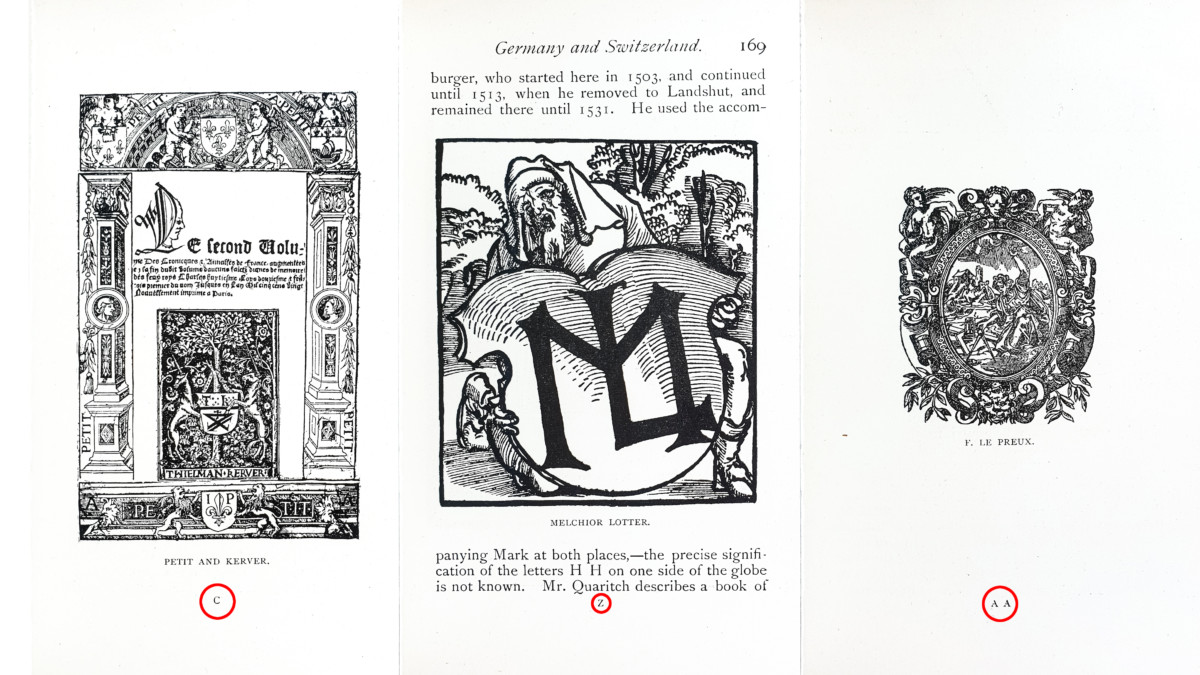Sorted Lists Before Excel: What Goes After Z in Old Books?
Most of you probably used Excel or similar spreadsheet software. If columns are set to be labeled by letters after Z goes AA. And then AB,… AZ, BA,… etc. But when it comes to old books, there were other ways to use letters for sorting.
I just recently published a post about Printers’ Marks: A Chapter in the History of Typography, a book with scores of samples of printers’ marks. However, besides the main subject, there are many other interesting details hidden in this book. One of them is the way sorting of the signatures was performed.
While I was studying computer science, sorting was a chore that I had to perform multiple times. Since high school and throughout the university years. Some of you may have noticed how approaches to sorting file names and other objects differ from operating system to operating system. Some of them will sort a list “0, 01, 002, 3” as I wrote it, the other ones will do it the following way: “0, 002, 01, 3.” And that’s only one quick sample.
Many modern experts would tell you that using letters for sorting is good when you have a list of some meaningful objects. Like words in a dictionary, or countries, or names of students in a class. But when letters are used just as a replacement of numbers, it may be confusing for people. However, that’s precisely what was traditionally done to mark and sort signatures of books.
As far as I understand, in modern mass-produced books signatures are marked with numbers (if that’s not a perfect bound book). But for centuries, since the first printed books, letters were used. And the order was different from what you may find in your electronic spreadsheet. So, even if in the Printers’ Marks: A Chapter in the History of Typography after letter Z comes AA, the following signature is marked BB (the images below are clickable).
What’s even more fun, letters J and V are omitted. That was done because J was initially just a decorated I, and letters U and V were initially just the same. Also, this allowed to avoid confusion of having similarly looking letters marking different signatures. The latter one is the reason why signature marked W is also missing from the book.
After I posted a link to the post about Printers’ Marks: A Chapter in the History of Typography on our Facebook page, we had an excellent discussion with James Darlack. It began due to some other small details from the book, but one of the things we talked about were Roman letters used to mark signatures.
In Printers’ Marks: A Chapter in the History of Typography every signature is marked only once. But printers in previous centuries used to label all leaves in a signature. So you’d see something like “Bi, Bii, Biii, Biv,” or instead of Bi, there may be just B. And instead of Biv, there may be Biiii or even Biiij. Each of these small details may give you a hint to where and when the book was printed.
Here is a couple of samples provided by James. Check the asterisk sign on the first image; it may also help you to date and place the book.
To find out more you may check the following links. There are lots of samples and details on the subject there.
- Deciphering signature marks at The Collation
- Signature (i) at Textual Histories
- Signatures at Hamlet on the Ramparts
Please Support us on Patreon!
 The minimum level of contribution is only $1 per month.
The minimum level of contribution is only $1 per month.
Moreover, starting with the pledge level of $3, you will get a digitized vintage book about bookbinding, book history, or book arts each month from us!
These pledges help iBookBinding to continue its work and bring more information about bookbinding and book arts to you!







